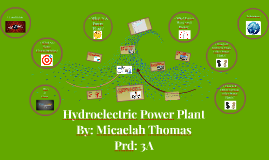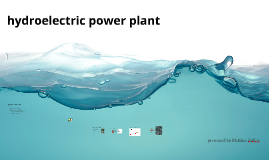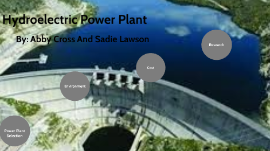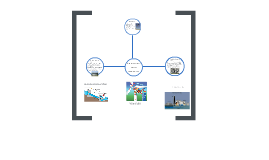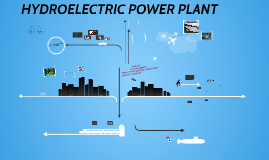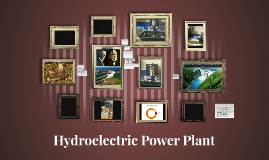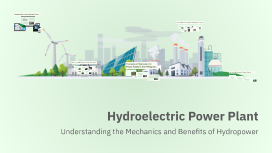Hydroelectric Power Plant
Transcript: Hydroelectric Power Plant The Hoover dam was constructed in 1931-1936 during the Great depression; it was dedicated by President Franklin D. Roosevelt. Hydroelectricity - Wikipedia, the free encyclopedia. 2015. Hydroelectricity - Wikipedia, the free encyclopedia. [ONLINE] Available at: https://en.wikipedia.org/wiki/Hydroelectricity. [Accessed 14 September 2015]. The World's First Hydroelectric Power Plant Began Operation. 2015. The World's First Hydroelectric Power Plant Began Operation. [ONLINE] Available at: http://www.americaslibrary.gov/jb/gilded/jb_gilded_hydro_1.html. [Accessed 14 September 2015]. Vulcan Street Plant - Wikipedia, the free encyclopedia. 2015. Vulcan Street Plant - Wikipedia, the free encyclopedia. [ONLINE] Available at: https://en.wikipedia.org/wiki/Vulcan_Street_Plant. [Accessed 14 September 2015]. Pelton wheel - Wikipedia, the free encyclopedia. 2015. Pelton wheel - Wikipedia, the free encyclopedia. [ONLINE] Available at: https://en.wikipedia.org/wiki/Pelton_wheel. [Accessed 14 September 2015]. Lester Allan Pelton - Wikipedia, the free encyclopedia. 2015. Lester Allan Pelton - Wikipedia, the free encyclopedia. [ONLINE] Available at: https://en.wikipedia.org/wiki/Lester_Allan_Pelton. [Accessed 14 September 2015]. History of Hydropower | Department of Energy. 2015. History of Hydropower | Department of Energy. [ONLINE] Available at: http://energy.gov/eere/water/history-hydropower. [Accessed 14 September 2015]. In the 1870s, the Pelton wheels was introduced The Pelton Water Wheel was invented in the mid 1870s, by Lester Allan Pelton. It was This used a slightly different method than the previous water wheel, using the momentum of moving water to turn the wheel, instead of its dead weight. Lester Allan Pelton was an American Inventor that made a huge contribution to the development of hydroelectricity (and hydropower in general) by his inventions, the Pelton Water Wheel. The Intial Discovery /reaction The first Hydroelectric power station In 1882, September 30 to be exact, the first hydroelectric power station started running. It was situated on the Fox River in Appleton, Wisconsin. This whole idea of this came from a man called H.J. Rogers, who was inspired by the power plants of Thomas Edison, a very famous inventor of the times. These plants were steam-driven. So Rogers decided to get a group of people to work on the project of making the first hydroelectric power plant. In doing so he formed his company - Appleton Edison Electric Light Company. This was the dawn of hydroelectric power plants, which many operate today. Unfortunately, the Vulcan Street plant was destroyed in a fire in 1891, but a complete replica was later built on South Oneida Street. How the world would look like if that discovery had never been made? The modern hydro power turbine began mid 1700s when a French engineer, Bernard Forest De Belidor who designed an architectural plan of the Hydraulique. References In 1880, the dynamo generator was driven by the water as it was used to provide electricity during the processive reaction. In 1881, the generator connected to a turbine with a flour mill that would provide street lighting. This was used in the Niagara Falls, New york The discovery of hydroelectricity has impacted many countries such as the United States of America, Canada and China. They use the hydroelectricity plants to power electricity cables for towns, suburbs and hopefully it will eventually be used in countries as they are seeing the benefits of it. If hydroelectricity was not discovered 100’s and 1000’s years ago by ancient Greeks and Egyptians the world would be lacking in another renewable resource and we would be using up more of the earths fossil fuels that take 100’s of years to create. In ancient greece the water wheels were used for grinding wheat into flour more than 2,000 years ago. The modern hydro power turbine began mid 1700s when a French engineer, Bernard Forest De Belidor who designed an architectural plan of the Hydraulique. The demand for the Industrial Revolution influenced the thriving development of the electrical generator that can generate electricity through water. As technology developed so did the lifestyle of many people who manually did work on the fields and working with water sources. The development of the hydroelectric power plant has revolutionised the world and has changed the daily lives of many who worked by hand. The hydroelectric power plant can now power more than thousands of homes with electricity. In 1878, the first hydroelectric power developed at Northumberland, England by William George Armstrong Reaction: An electric spark in the air is caused between two conductors in the the blades of the generator create friction to produce electricity. The next steps which brought that discovery/reaction into our day and age






